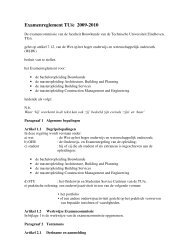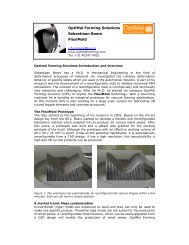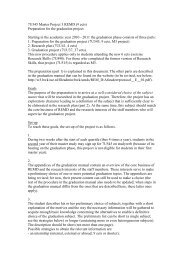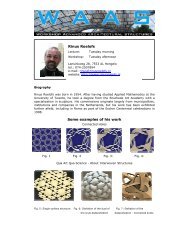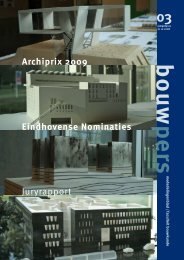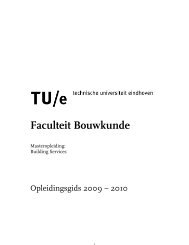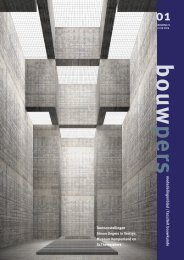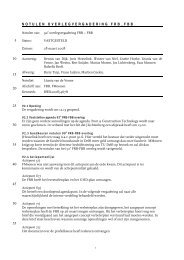afst.bundel 8 MEI 07 - Technische Universiteit Eindhoven
afst.bundel 8 MEI 07 - Technische Universiteit Eindhoven
afst.bundel 8 MEI 07 - Technische Universiteit Eindhoven
You also want an ePaper? Increase the reach of your titles
YUMPU automatically turns print PDFs into web optimized ePapers that Google loves.
Afbeelding 2 Parameter Scheme: Filling - Skin<br />
Afbeelding 3 Pre-stress Derivation: Direct and Indirect Component<br />
<strong>afst</strong>udeer<strong>bundel</strong> faculteit bouwkunde<br />
Afbeelding 5 Reconfigurable Formwork System<br />
concentrating on the individual properties of the two main<br />
components: the (enclosing) skin and the filling. The structural<br />
as well as architectural qualities of vacuumatics are further<br />
explored by means of several small scale models and prototypes,<br />
as well as a material study of the filler elements.<br />
The aim is to gain fundamental understanding in and control<br />
over the underlying design principles so as to be able to<br />
optimise structural assemblies to specific conditions and<br />
required behaviours.<br />
The behaviour of vacuumatic structures depends on the exact<br />
nature of the materials used. Although almost any type of filler<br />
material may be applied with vacuumatics, their enhanced<br />
structural properties in vacuumatic state are essential, since this<br />
determines the final capacity of the structure with regard to<br />
strength, stiffness and stability (and therefore safety).<br />
The vacuum pressure acting on the covering foils causes this<br />
skin to be tightly wrapped around the surface of the filler<br />
elements, hence resulting in a pre-stress of the vacuumatic<br />
structure. The skin in particular seems to be of big importance<br />
to the structural potential of vacuumatics, since it not only<br />
ensures the structure’s integrity (as it provides the essential<br />
air-tightness), its deformation also largely determines the<br />
distribution of the pre-stress throughout the structure.<br />
The skin deformation is mainly determined by the elasticity of<br />
the skin material, and to some extend by the compression<br />
(and thus shrinkage) of the filling. The pre-stress force acting on<br />
each (granular) filler element is found to be divided into a direct<br />
and an indirect component.<br />
The ability to adjust and control the reconfigurability of the filler<br />
elements (and thus the flexibility of the structure) by means of<br />
varying vacuum pressure results in the so called “reversibility”<br />
of the rigidifying process, enabling vacuumatic structures to be<br />
shaped over and over again.<br />
Afbeelding 6 “New” Shapes in Concrete<br />
The original “flexible” behaviour of vacuumatics in un-deflated<br />
(or “re-flated”) state opens up many possibilities with respect to<br />
the relatively low-tech realisation of free-form designs. In order<br />
to literally mould vacuumatic structures into a certain desired<br />
shape, some sort of morphological tooling is required that forces<br />
the filler elements into their “final” configuration.<br />
This process might be somewhat similar to the formwork with<br />
the production of concrete structures, but especially the ability<br />
to locally adjust the geometry has great potential with respect to<br />
its effectiveness and implementation into the current building<br />
industry.<br />
The hazard of damaging the enclosing skin and subsequently<br />
jeopardising the structural integrity of vacuumatics remains<br />
probably the biggest obstruction of introducing these structures<br />
into the current building industry as independent, primary and<br />
“permanent” load-bearing structures. On the other hand, this<br />
temporality and the advantageous characteristics of vacuumatics<br />
(the ability to be “free-formed”, to be adapted, to create a degree<br />
of randomness and to be repeatedly stabilised) seem to provide<br />
the “ideal” boundary conditions for a truly flexible, re-usable and<br />
most importantly reconfigurable moulding technique for the<br />
production of complex shapes and textures in concrete.<br />
21



